Akasa Turing Fanless Case Review: Unrivalled Noiseless NUC
by Ganesh T S on October 26, 2020 8:00 AM ESTHTPC Aspects
The display outputs' characteristics of the Bean Canyon NUC are covered in the review of the NUC8i7BEH. The NUC8i5BEK is similar. We have a HDMI 2.0a port supporting 3840x2160 at 60 Hz with HDCP 2.2 support and HDR. The Thunderbolt 3 / Display Port 1.2 port supports 4096x2160 at 60 Hz with HDCP 2.2 support, but no HDR. HD audio bitstreaming is supported on both outputs.
Our evaluation of the Turing build as a HTPC was done using the native HDMI output connected to a TCL 55P607 4K HDR TV via a Denon AVR-X3400H AV receiver. We tested out various display refresh rates ranging from 23.976 Hz to 59.94 Hz. Of particular interest is the 23.976 Hz (23p) setting, which Intel used to have trouble with in the pre-Broadwell days. The accuracy obtained in the Turing build is actually better than that of the NUC8i7BEH reviewed earlier.
The gallery below presents screenshots from the other refresh rates that were tested. The system has no trouble maintaining a fairly accurate refresh rate throughout the duration of the video playback.
Similar to the NUC8i7BEH, the Turing build based on the NUC8i5BEK also satisfies all the requirements such as SGX and appropriate Management Engine firmware to enable playback of Ultra HD Blu-rays.
YouTube and Netflix Streaming
Our HTPC testing with respect to YouTube had been restricted to playback of a 1080p music video using the native HTML5 player in Firefox. The move to 4K, and the need to evaluate HDR support have made us choose Mystery Box's Peru 8K HDR 60FPS video as our test sample moving forward. On PCs running Windows, it is recommended that HDR streaming videos be viewed using the Microsoft Edge browser after putting the desktop in HDR mode.
The Iris Plus Graphics 655 GPU supports VP9 Profile 2 decoding, and YouTube is able to successfully deliver the 4Kp60 VP9.2 stream to the MS Edge browser.
Various metrics of interest such as GPU usage and at-wall power consumption were recorded for the first four minutes of the playback of the above video. The numbers are graphed below.
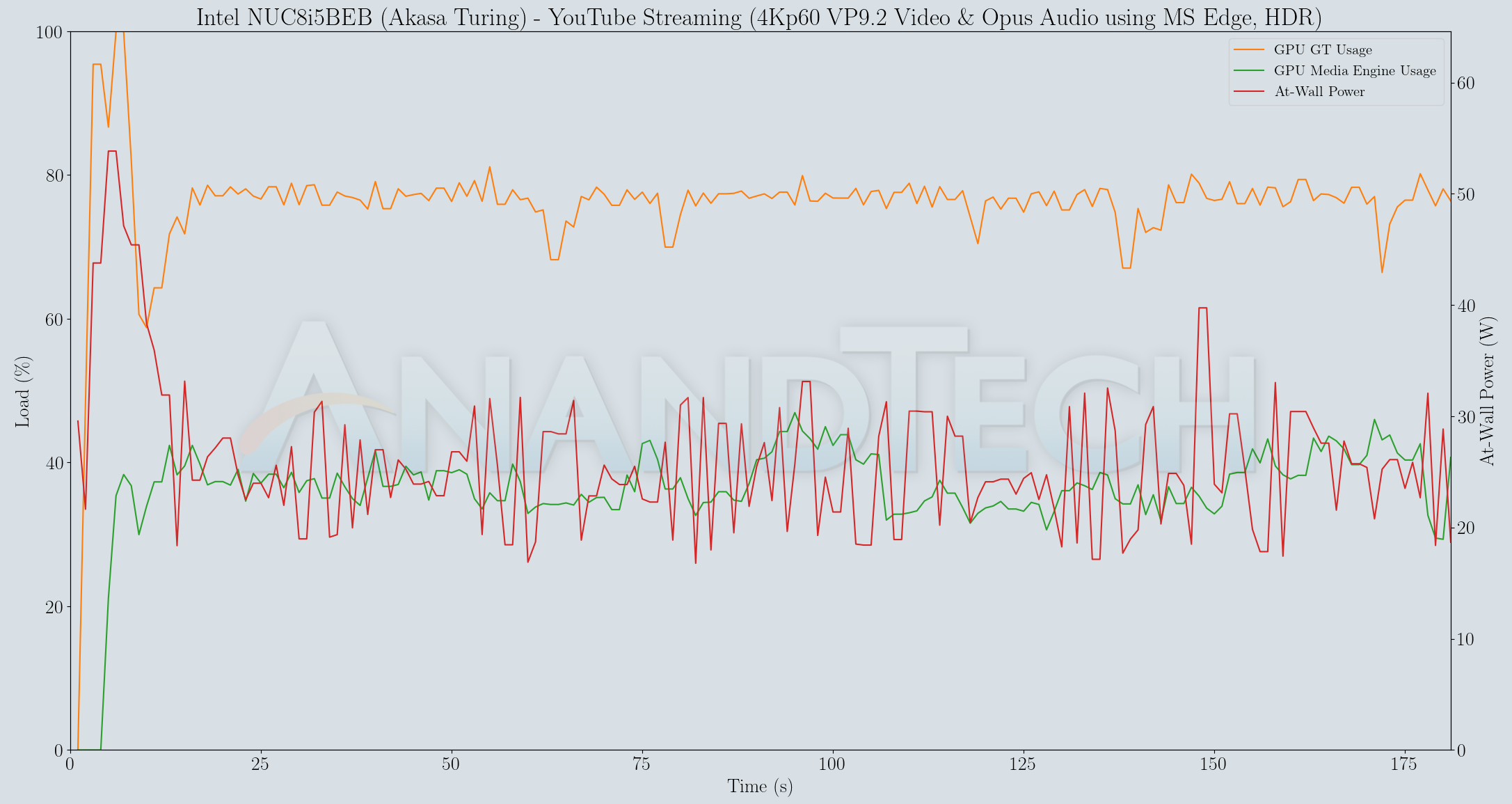
The at-wall power consumption is around 30W for the YouTube streaming case, and the media engine usage is around 40%. The GPU loading is around 75% (which also seems to be accounting the 40% media engine usage).
The Netflix 4K HDR capability works with native Windows Store app as well as the Microsoft Edge browser. We used the Windows Store app to evaluate the playback of Season 4 Episode 4 of the Netflix Test Patterns title. The OS screenshot facilities obviously can't capture the video being played back. However, the debug OSD (reachable by Ctrl-Alt-Shift-D) can be recorded.
The (hevc,hdr,prk) entry corresponding to the Video Track in the debug OSD, along with the A/V bitrate details (192 kbps / 16 Mbps) indicate that the HDR stream is indeed being played back. Similar to the YouTube streaming case, metrics such as GPU usage and at-wall power consumption were recorded for the first three minutes of the playback of the title. The numbers are graphed below.
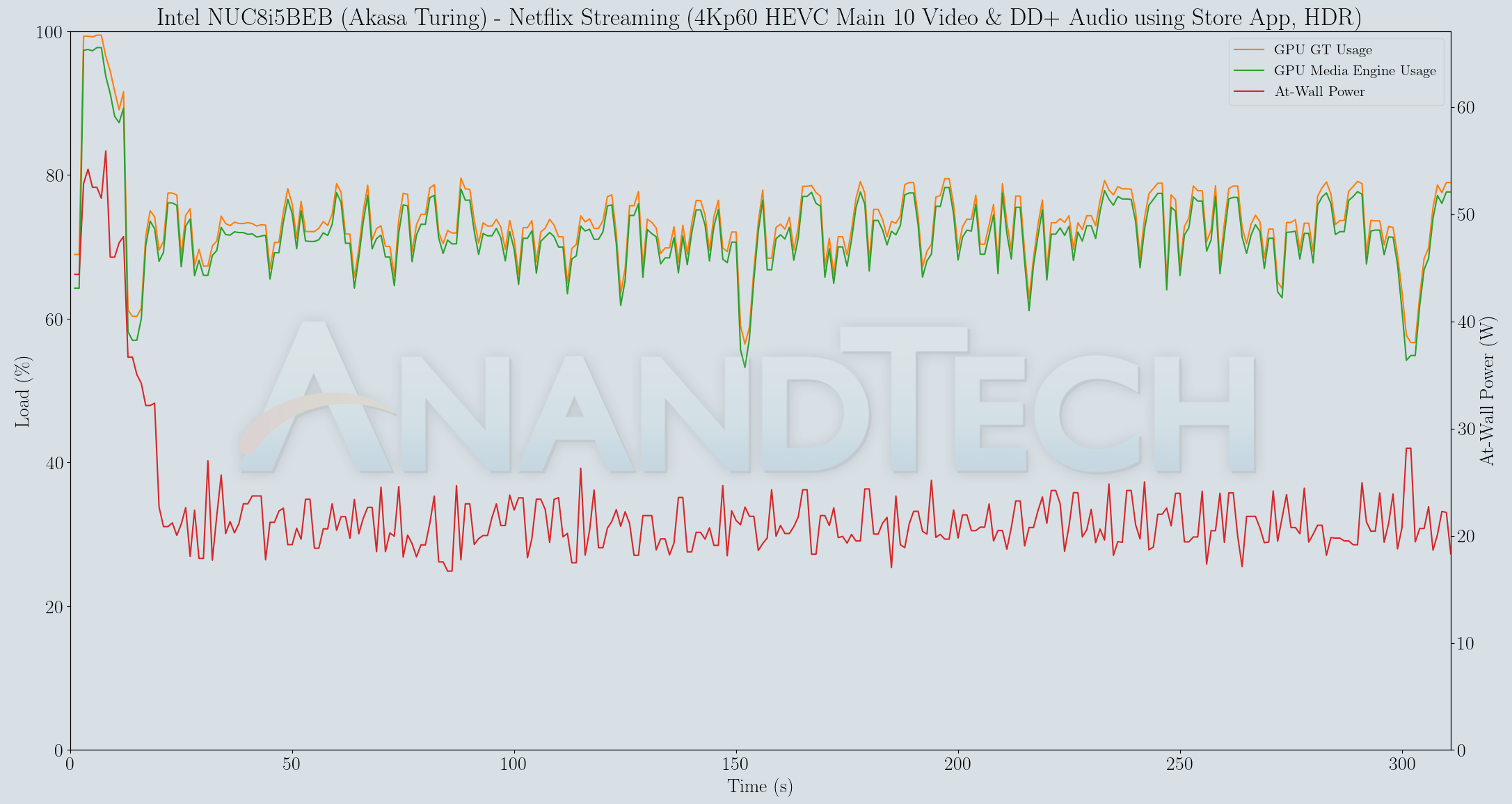
The 4Kp60 HEVC Main 10 decode takes up north of 70% of the media engine. The at-wall power consumption is slightly north of 20W.
Local Media Playback and Video Processing
Evaluation of local media playback and video processing is done by playing back files encompassing a range of relevant codecs, containers, resolutions, and frame rates. A note of the efficiency is also made by tracking GPU usage and power consumption of the system at the wall. Users have their own preference for the playback software / decoder / renderer, and our aim is to have numbers representative of commonly encountered scenarios. Towards this, we played back the test streams using the following combinations:
- MPC-HC x64 1.8.5 + LAV Video Decoder (DXVA2 Native) + Enhanced Video Renderer - Custom Presenter (EVR-CP)
- MPC-HC x64 1.8.5 + LAV Video Decoder (D3D11) + madVR 0.92.17 (DXVA-Focused)
- MPC-HC x64 1.8.5 + LAV Video Decoder (D3D11) + madVR 0.92.17 (Lanczos-Focused)
- VLC 3.0.8
- Kodi 18.6
The thirteen test streams (each of 90s duration) were played back from the local disk with an interval of 30 seconds in-between. Various metrics including GPU usage and at-wall power consumption were recorded during the course of this playback. Prior to looking at the metrics, it must be mentioned that the DXVA Checker report for the NUC8i5BEK is the same as the one for the NUC8i7BEH.
All our playback tests were done with the desktop HDR setting turned on. It is possible for certain system configurations to have madVR automatically turn on/off the HDR capabilities prior to the playback of a HDR video, but, we didn't take advantage of that in our testing.
VLC and Kodi
VLC is the playback software of choice for the average PC user who doesn't need a ten-foot UI. Its install-and-play simplicity has made it extremely popular. Over the years, the software has gained the ability to take advantage of various hardware acceleration options. Kodi, on the other hand, has a ten-foot UI making it the perfect open-source software for dedicated HTPCs. Support for add-ons make it very extensible and capable of customization. We played back our test files using the default VLC and Kodi configurations, and recorded the following metrics.
| Video Playback Efficiency - VLC and Kodi | |||
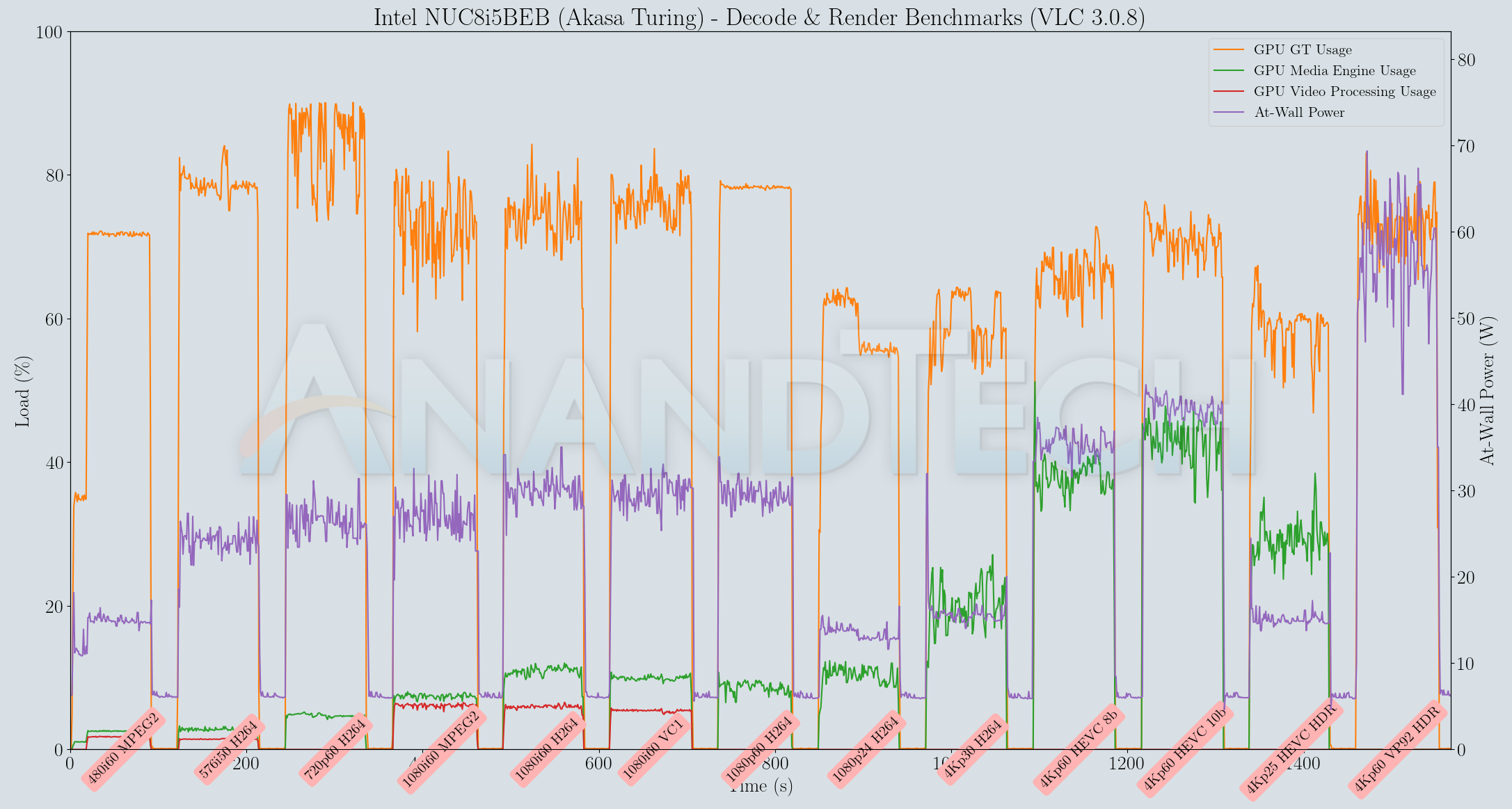
VLC doesn't utilize hardware acceleration for the VP9 Profile 2 stream, but does for everything else. Kodi uses hardware acceleration for all of the test cases. The at-wall power consumption is south of 25W for all streams with Kodi, but goes as high as 40W in VLC despite hardware decoding. On the whole, Kodi is more efficient compared to VLC for media playback on the NUC8i5BEB (Akasa Turing).
MPC-HC
MPC-HC offers an easy way to test out different combinations of decoders and renderers. The first configuration we evaluated is the default post-install scenario, with only the in-built LAV Video Decoder forced to DXVA2 Native mode. Two additional passes were done with different madVR configurations. In the first one (DXVA-focused), we configured madVR to make use of the DXVA-accelerated video processing capabilities as much as possible. In the second (Lanczos-focused), the image scaling algorithms were set to 'Lanczos 3-tap, with anti-ringing checked'. Chroma upscaling was configured to be 'BiCubic 75 with anti-ringing checked' in both cases. The metrics collected during the playback of the test files using the above three configurations are presented below.
| Video Playback Efficiency - MPC-HC with EVR-CP and madVR | |||
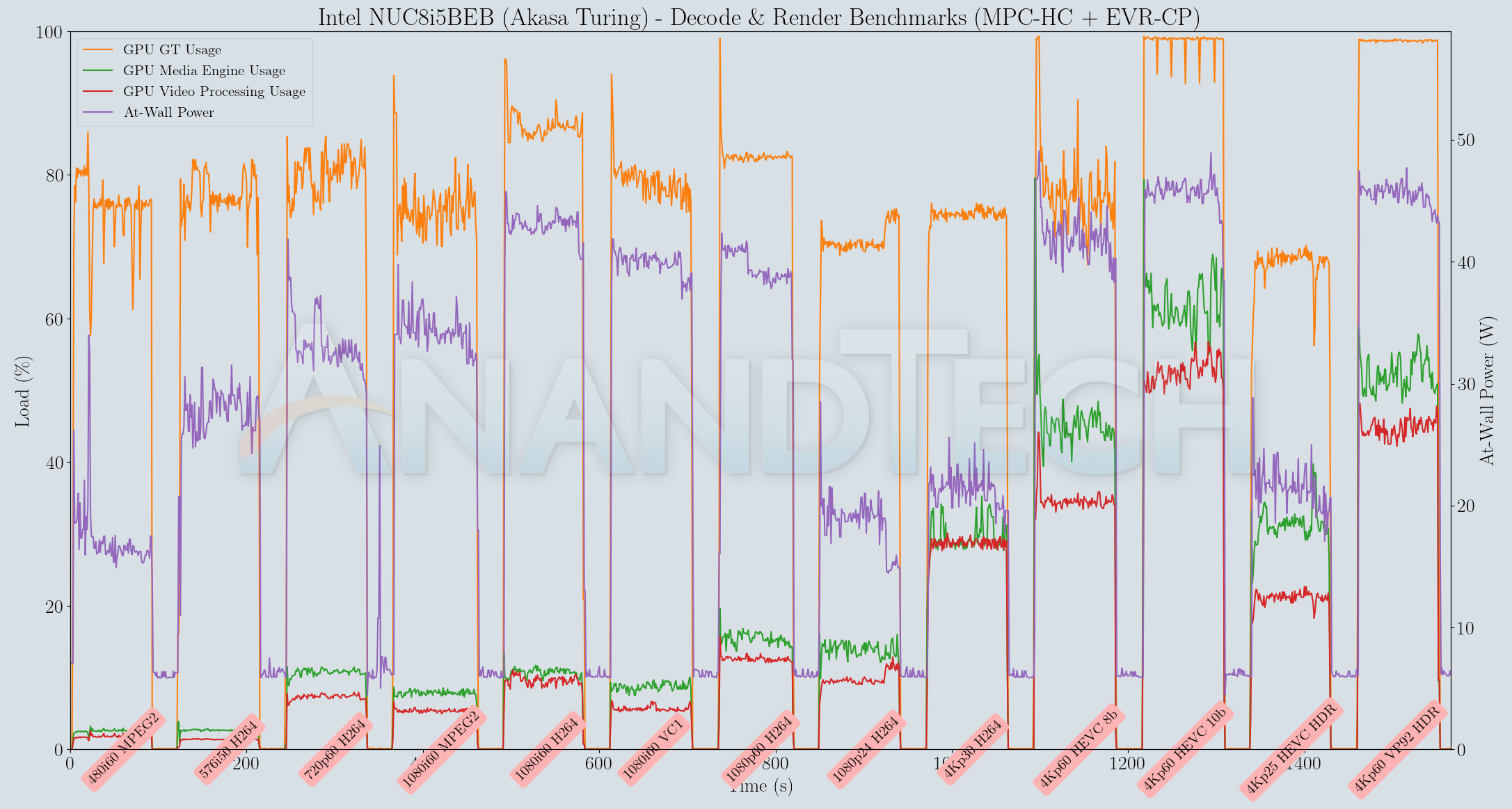
The passively-cooled Bean Canyon NUC is good enough to be able to play back the streams in EVR-CP configuration without any issues, but the power consumption numbers are similar to VLC's. With madVR, the GPU usage goes above 90% for some of the streams, resulting in dropped frames. Overall, Kodi remains the best choice for a playback program to use with the Bean Canyon NUC.









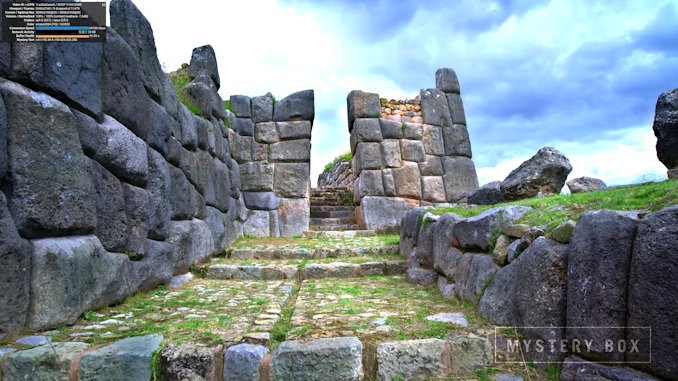
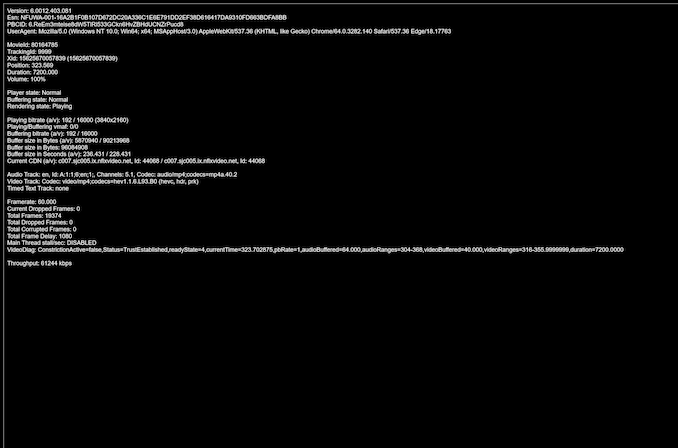








28 Comments
View All Comments
Flunk - Tuesday, October 27, 2020 - link
The publicity photos on Akasa's site show it in both orientations.Operandi - Monday, October 26, 2020 - link
The build quality on these is pretty exceptional and they work really well. I have a slightly smaller version with i3 based NUC hardware functioning as a HTPC; 0 noise and looks sick. At some point I'd like to try one of their ITX options with a AMD APU.tfouto - Monday, December 28, 2020 - link
Does the Wlan antena works on the new case? If not how does one solve this?eastcoast_pete - Monday, October 26, 2020 - link
Thanks, interesting review! This question isa bit out of left field, but are there (still) kits or build plans for a silent mineral oil-immersion cooled systems out there? (Very pure, pharmaceutical grade mineral oil, of course) I thought for a long time now that those might be a great solution for silent computing, as long as one doesn't want or have to modify the setup after it's in the oil. Any experience with one of those? They should be able to take a lot more TDP than a dry passive system like this one.SirPerro - Monday, October 26, 2020 - link
That exists since a long time ago. It works just fine! Very heavy build and nasty maintenance though...eastcoast_pete - Monday, October 26, 2020 - link
I saw some older reports and even reviews on those, but most were at least 10 years old and "archived". Do you (or anyone else) here know of kits that are available to buy. The DYI is a bit risky and gets messy, not the least because oil tends to travel up cables and connectors; there is a reason why WD40 etc exist and work - oil has high capillary action. Any information is appreciated!Spunjji - Wednesday, October 28, 2020 - link
I don't think there was ever enough money in it for kits to be sustainable - it's just too niche!dontlistentome - Monday, October 26, 2020 - link
Had two of their cases previously - Euler (thin-itx +35w i5) and Newton (7th Gen i5 NUC).Might be a northern european thing (UK) but in our typical rooms at home with no active air circulation, i've had overheating issues with both - throttling and outright thermal shutdown. Had to run a usb fan at times that defeats the whole point.
Looking at the peak temperatures here, i'm guessing this is the same.
I've now gone for a case with a slow fan that I can hide under my desk - not as pretty but it never crashes and is effectively silent too.
Operandi - Monday, October 26, 2020 - link
Room air flow plays a role I'm sure. My gen 8 i3 based NUC is in the Plato which looks like it has quite a bit more surface area than the Newton. Its also out completely out in the open and has the benefit of central air though AC is almost never on. I've never had thermal issues with mine running World Community Grid at 75% load all summer. A 100% stress test on a hot day (28c) will cause it to throttle but thats not a realistic use case so I'd say it does quite well.Oxford Guy - Monday, October 26, 2020 - link
Remember the Kickstarter for the high-performance fabless gaming system touted by TweakTown, Linus, and others? Calyos.Apparently vaporware. The backers, last time I checked, received nothing. And, that may include people who preordered from their separate website. Also, apparently some of the people behind the Calyos debacle moved on to set up another company to sell, you guessed it, fabless gaming PCs and cases. I assume that didn’t go very far, too.
People with tinnitus who want to game have a hard time. They either get to choose underpowered equipment or vaporware.